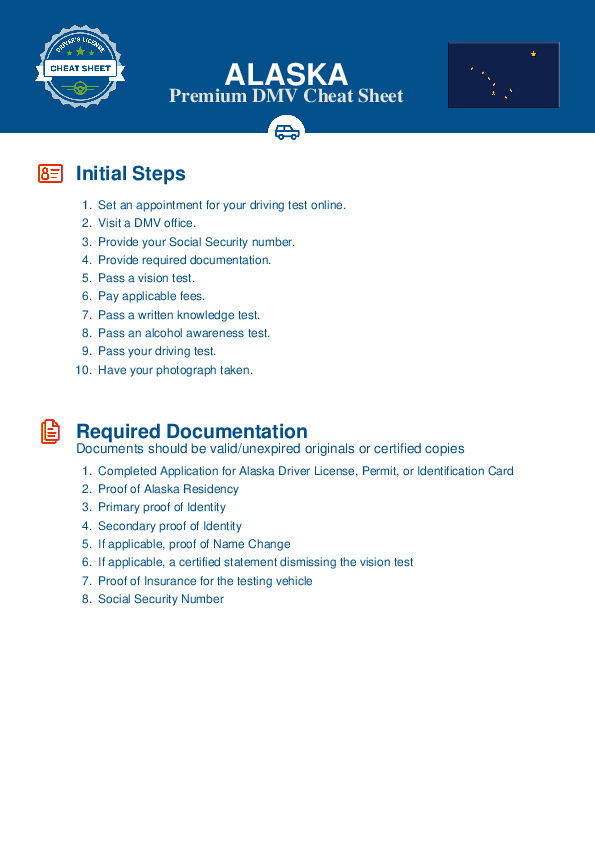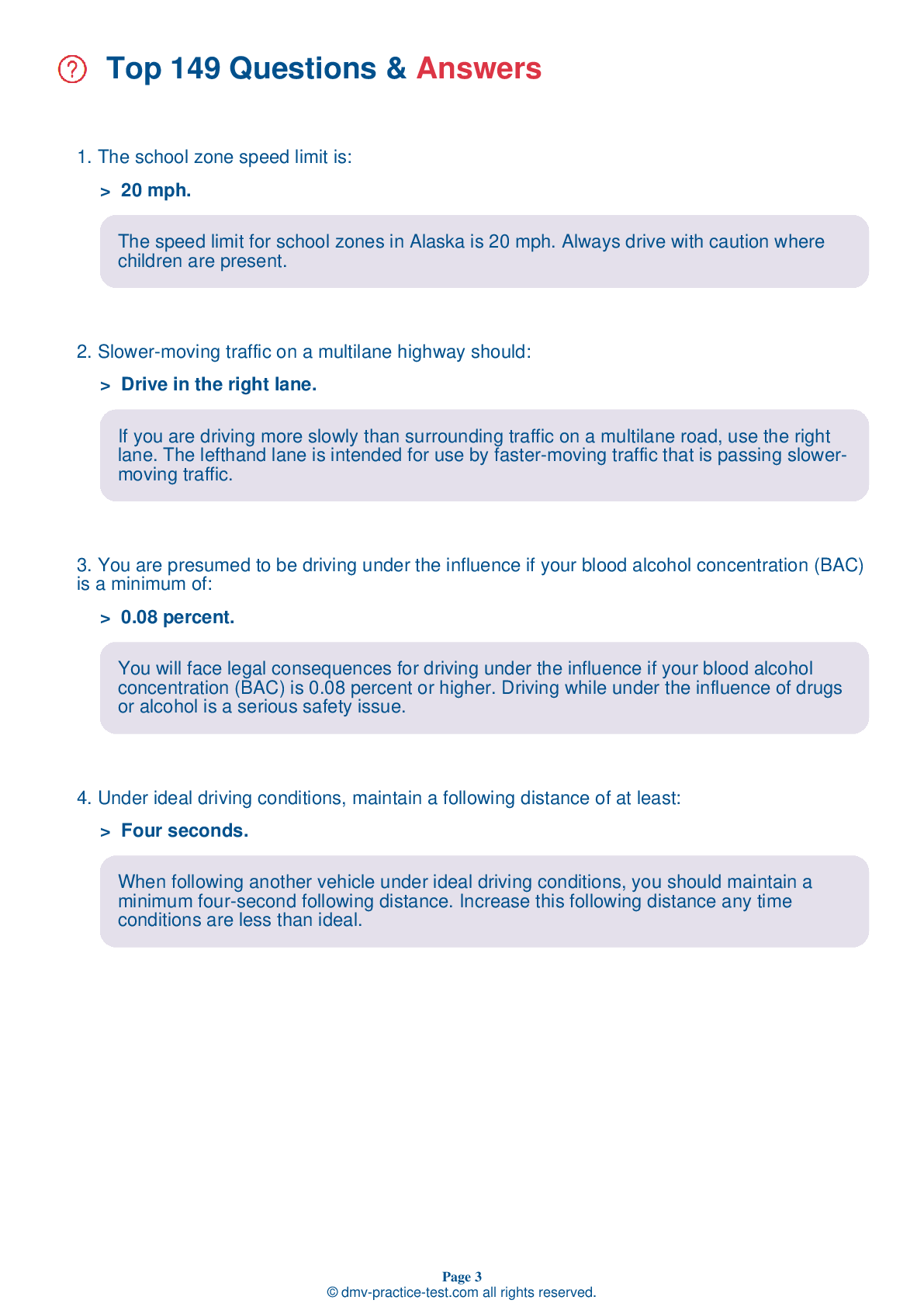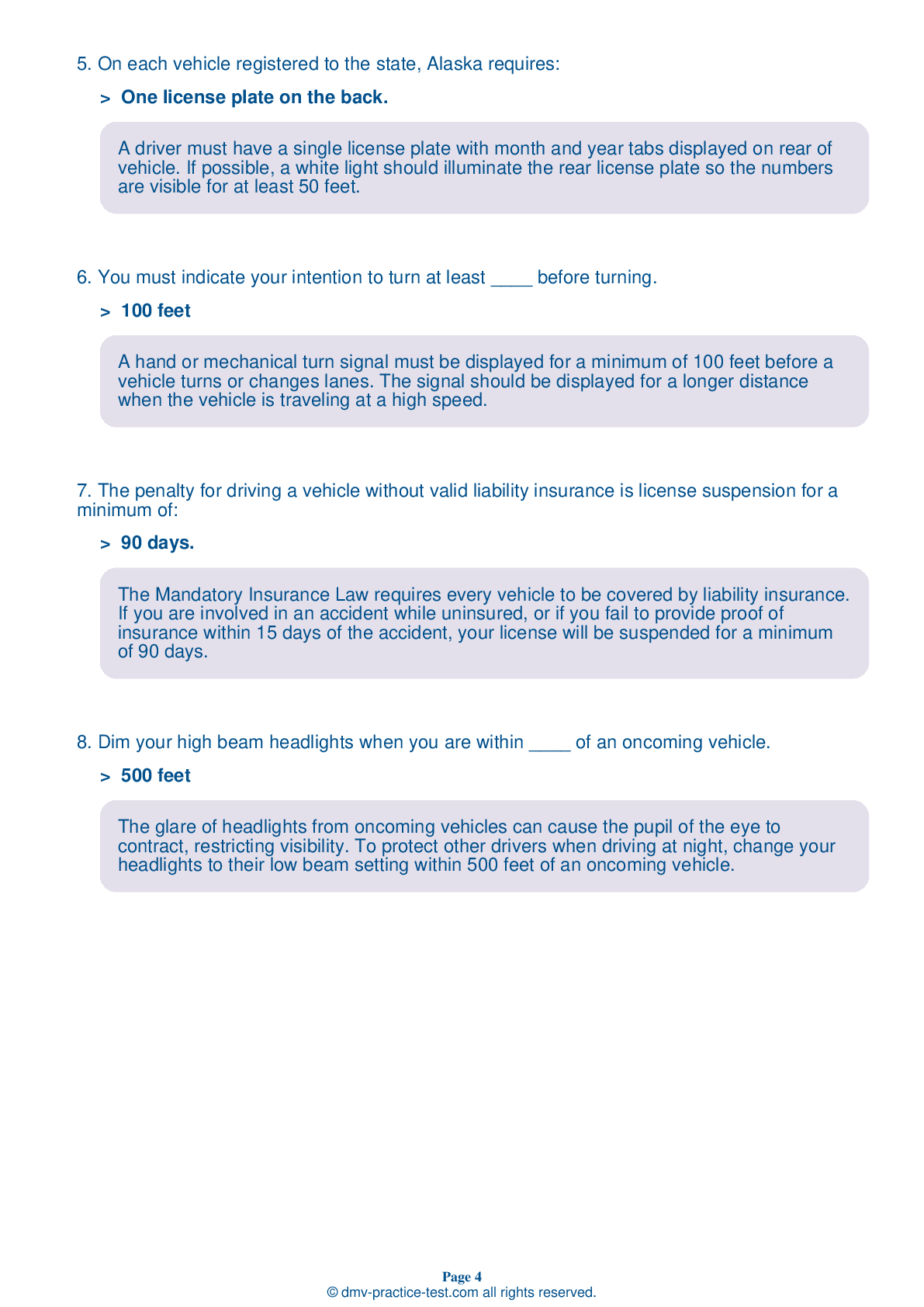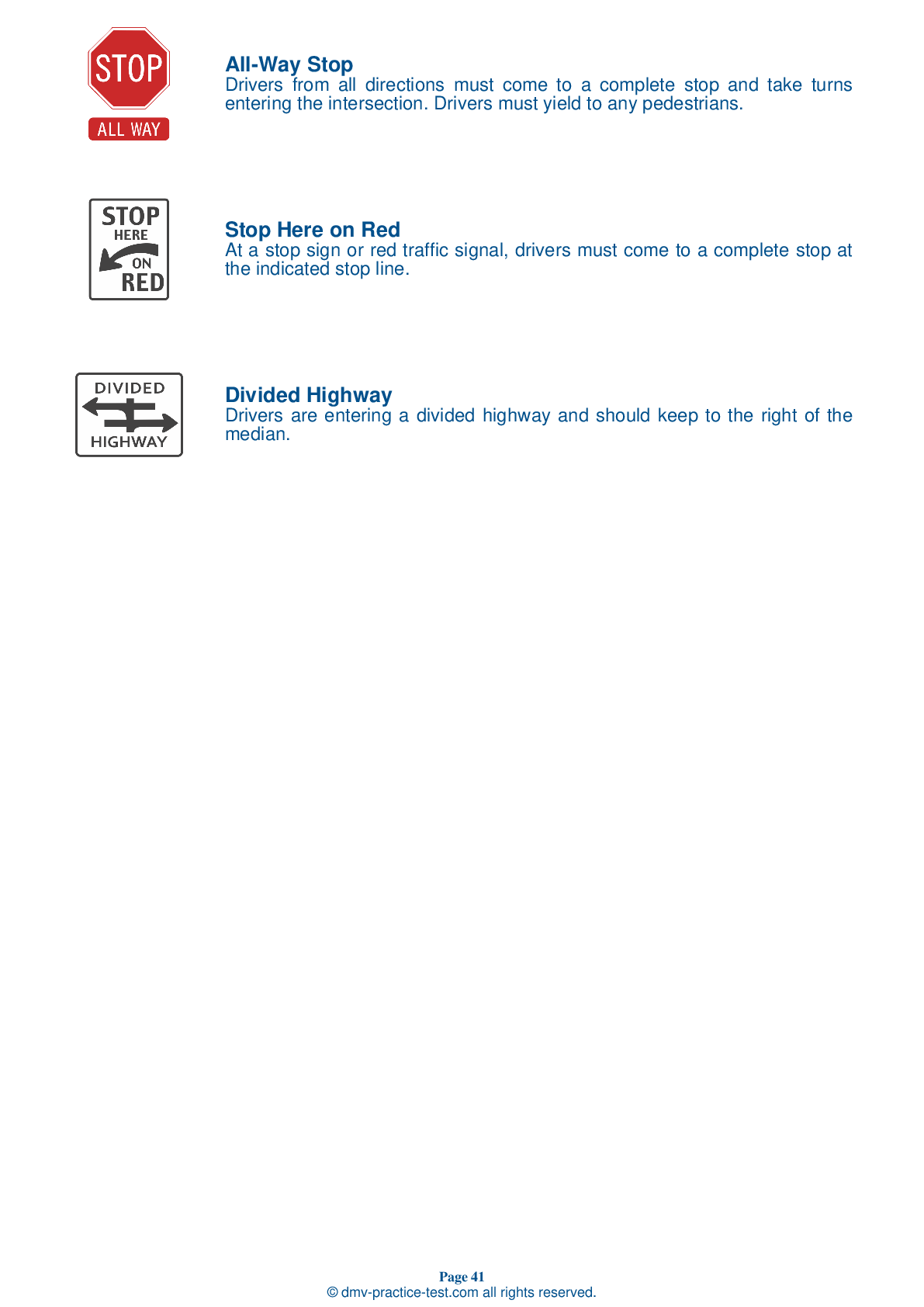FREE Alaska DMV Practice Test #15 Page 3 of 3
This Alaska DMV practise tests has just been updated for January 2026. It contains questions based on the most essential traffic signs and limitations from the Alaska Driver Handbook for 2026. Use actual questions that are very close (often identical!) to the DMV driving permit test and driver's licence exam to prepare for the DMV driving permit test and driver's licence exam.
To help you recall the topics, each practise test question includes a suggestion and explanation. The written component of the official DMV test will include questions about road rules, traffic signs, and driving statutes, as well as information from the Driver Handbook.
To get the required passing mark, you must correctly answer 16 out of 20 questions. Take our DMV practise exam to help you prepare for your Alaska instruction permit or driver's licence.
The DMV exam is available in multiple languages.
Using any form of testing aid will result in an automatic failure, and the DMV may take further action against your driver's licence, so don't do it.
14 . This sign means:
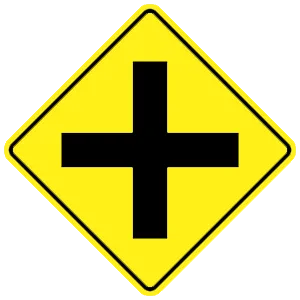
This sign warns of the presence of a crossroad ahead.
15 . This sign means:
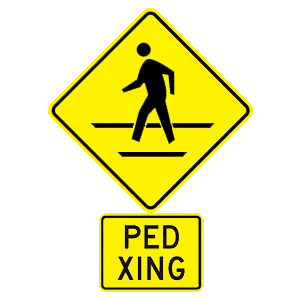
Warning signs are usually diamond-shaped with black markings on a yellow background. They alert drivers to upcoming hazards. This sign indicates that there may be pedestrians crossing the road ahead.
16 . Worn or bald tires:
Worn or bald tires can increase your stopping distance and make turning more difficult. Tires without adequate tread also increase the risk of hydroplaning.
17 . If you are about to miss your exit on a highway or freeway, you should:
If you are approaching your desired exit on a highway or freeway and you are driving in the wrong lane, do not drive across traffic to reach the exit. Continue driving to the next exit and leave the highway safely.
18 . Dim your high beam headlights when you are within ____ of an oncoming vehicle.
The glare of headlights from oncoming vehicles can cause the pupil of the eye to contract, restricting visibility. To protect other drivers when driving at night, change your headlights to their low beam setting within 500 feet of an oncoming vehicle.
19 . When driving on slick roads, you should:
While it is always dangerous to drive too fast on slippery roads, this is especially true when driving in turns and curves. Be sure to approach them more slowly in slippery conditions than you would under normal circumstances.
20 . If worried, nervous, angry, or crying, a driver:
You may not be able to drive well if you are worried, excited, crying, angry, or depressed. Emotions can distract you from your driving because your mind is focused on something else. Take time to calm down and get focused before driving.
See the exact questions that will be on the 2026 Alaska DMV exam.
99.2% of people who use the cheat sheet pass the FIRST TIME
LT gives us an insight on how the cheat sheet provided her with all the study questions she needed before taking her test.
Joe initially studied with the handbook and failed his test, he eventually found us online, studied and pass his test the first time around.
